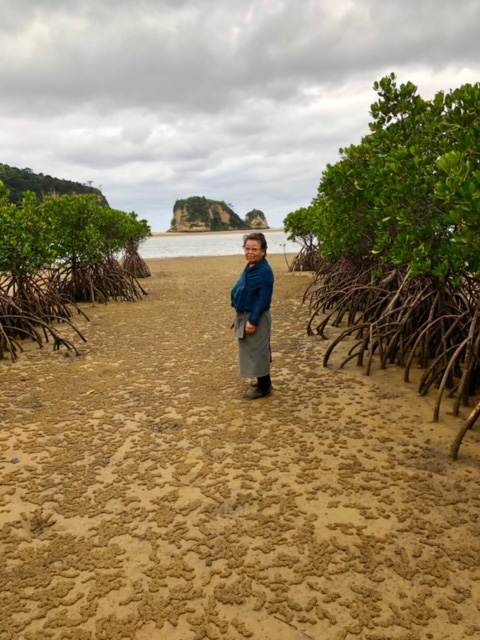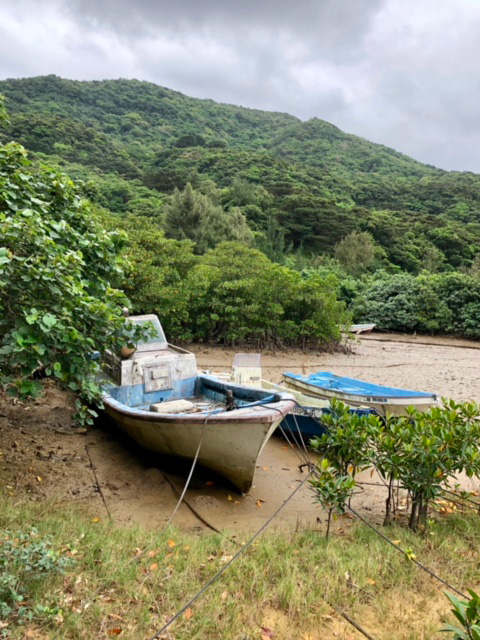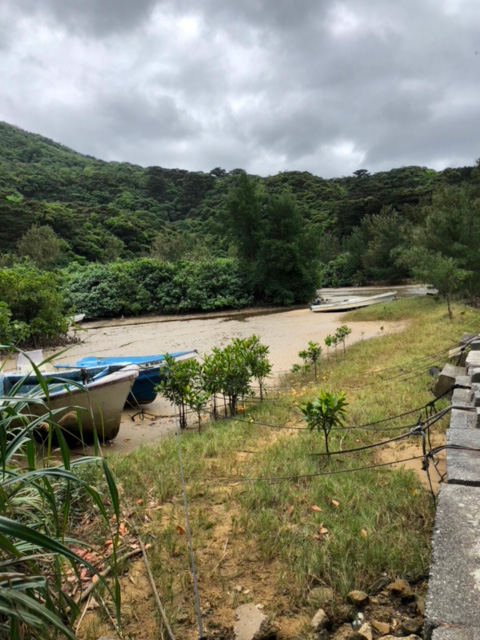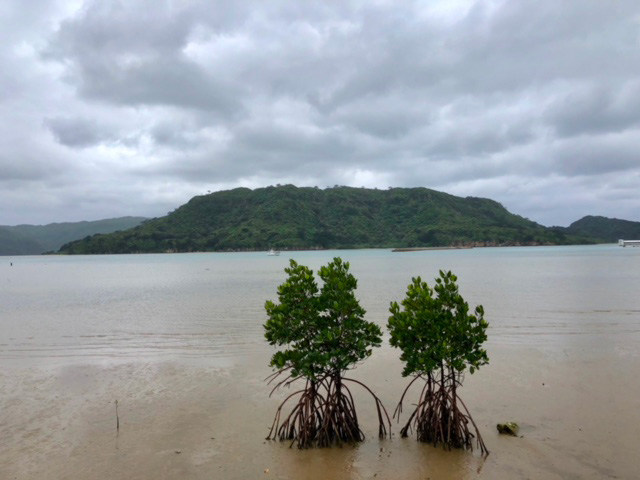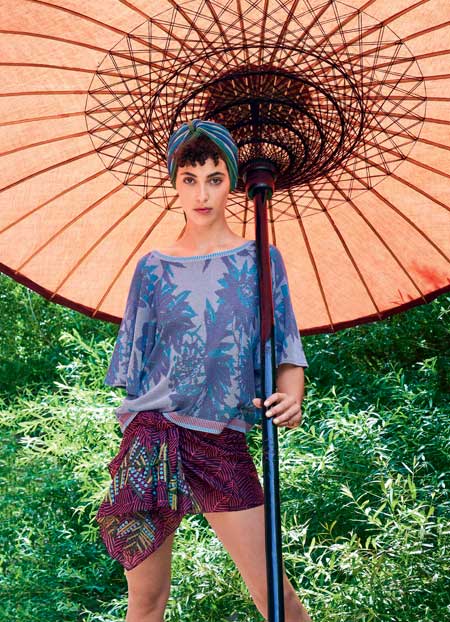As Mrs Ishigaki travels all around the world I thought that we could communicate in English... but, in fact, not at all… and my Japanese is very poor!! Happily, my interpreter and very good friend Hanako was on holiday looking for some resort place to go with her mother. So, why not Iriomote Jima? Nous voilà donc parties Here we go together! Wind, dark grey sky and ocean gave a dramatic tone to our arrival on this wild land, usually coloured with this green and turquoise of Pacific Islands.
Akiko, aged 80, is gifted with the eternal youth typical particularity of Okinawa region. She was born in Takeotomi, close to Iriomote and has been weaving since her childhood on behalf of local tradition. She turned her skill into a unique art which rewarded her with international recognition.
She first took us in her workshop, a wide building with beaten earth where woven swatches and dried dyeing plants are shown. At the other end of the workshop, a young girl is siting at her loom. She is weaving banana fiber which gives an ideal fabric for summer kimonos because it can perfectly absorb humidity and sweat. Now Akiko is dropping creation to transmit her techniques and skill to trainees who can spend at least one year with her as she did herself with her master in Kyoto to enhance her art.
|
Then we went out of the workshop to go into Akiko’s garden. She takes care of it with her husband, Kinsei. We followed a small path between various plants and vegetables but also indigo, linen and mulberry trees for breeding silk worms… all plants around us are used for spinning or dyeing yarns! Akiko is showing me the colour gradation she can get with indigo which goes from green to purple blue depending on the level of fermentation of the plant. She can also get yellow tones from the fruit of a special tree.
Meanwhile the tide drew back, this is the ideal time to visit the rest of the land next to the ocean. Here they are cultivating a field of banana trees for the fiber that the Iriomote people use for traditional weaving and further on, a rice field and of course mangrove trees, sitting on their roots above the water: their bark is used for dyeing as well. This is the place, among the mangrove, where Akiko goes and washes her fabrics once dyed, in a very specific spot of the mouth of the river, in a half fresh and half salt water, to fix the colour.
|
